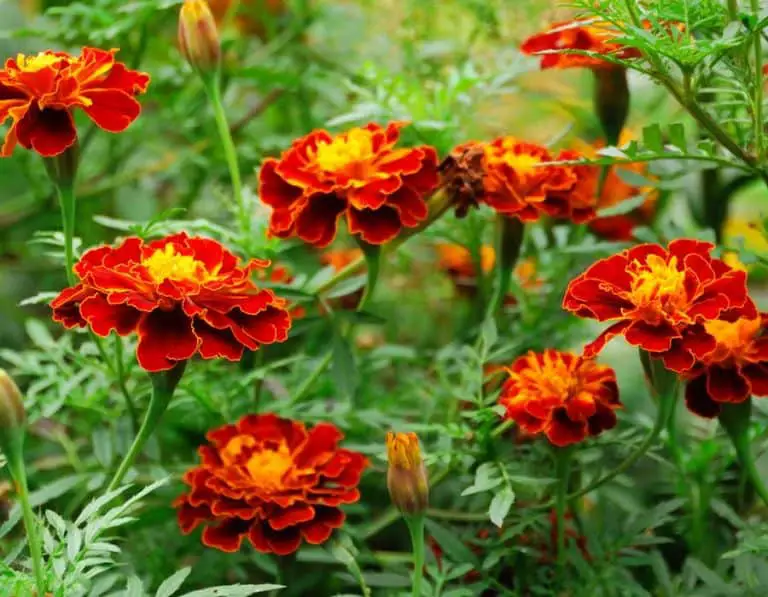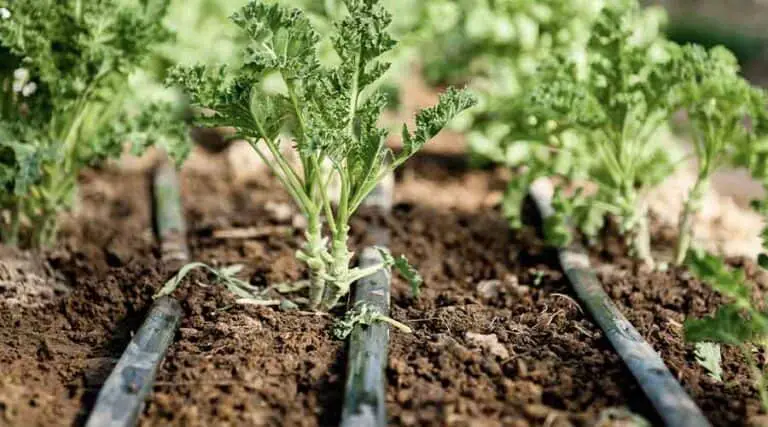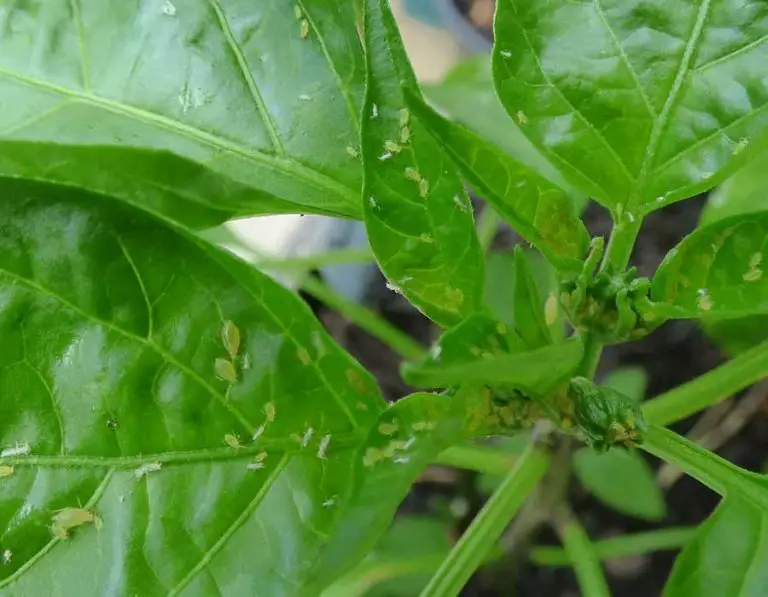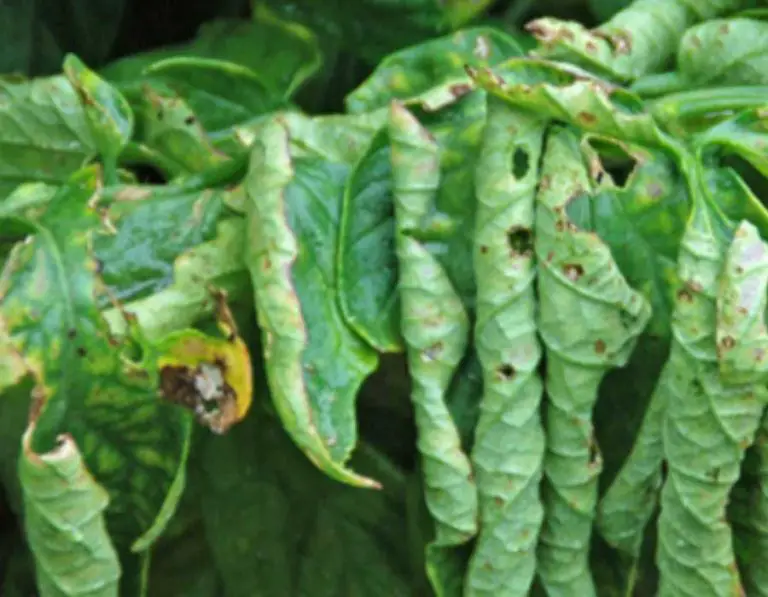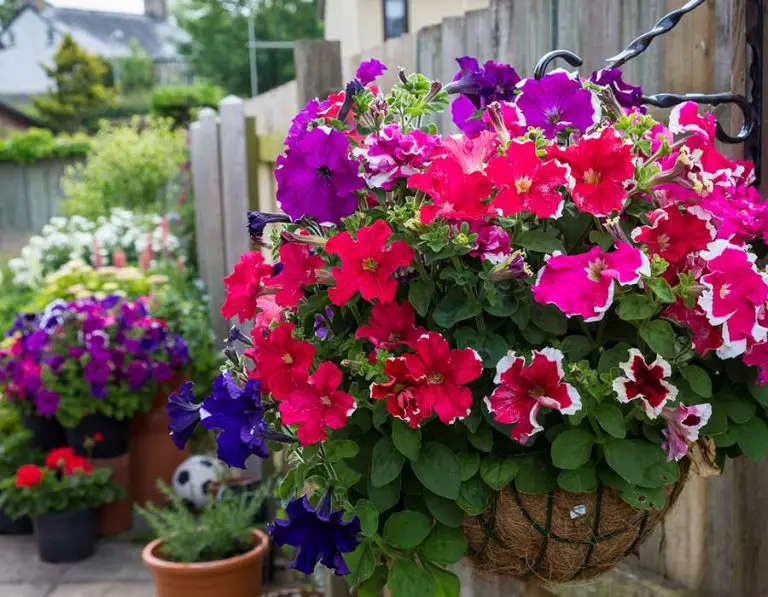What’s Eating My Roses? Identify & Eliminate The Culprits
As a rose enthusiast, I know the heartbreak of discovering that something has been eating away at the leaves of my beloved plants. The damage can range from unsightly holes and skeletonized foliage to stunted growth and prematurely wilted flowers. In my experience, several culprits can cause these issues, including insects and animals.
Determining the specific cause of the damage is crucial in order to implement the right solutions to save my roses.
In my research, I’ve found that some common pests responsible for eating rose leaves include Japanese beetles, rose slug sawflies, deer, squirrels, and rabbits. Identifying the telltale signs of these pests is the first step in effectively addressing the problem and ensuring the health and beauty of my rose garden.
Aside from identifying the culprits, it’s also important to learn how to prevent and control these pests in the future. Using targeted methods and natural alternatives like neem oil can help keep these uninvited guests at bay, providing a safe environment for my roses to thrive. Armed with the right knowledge and strategies, I’m confident that I can protect my rose garden and continue to enjoy its full beauty.
Identifying Rose Pests
In this section, I will discuss common pests that may be eating rose plants and how to identify them. To help you easily understand and identify these pests, I’ve organized the information into sub-sections.
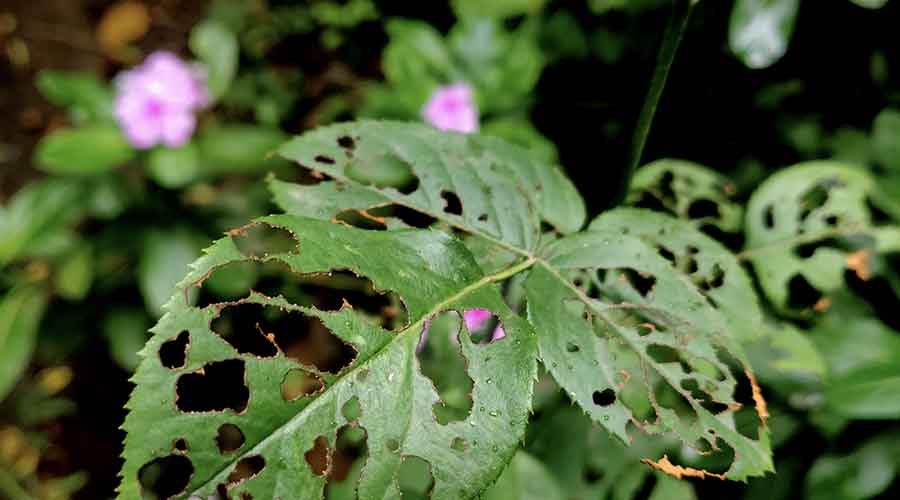
Aphids
Aphids are small, sap-sucking insects that can be green and/or pink in color. They often cluster on the foliage, flower buds, and shoot tips of rose plants, causing the affected plant parts to become sticky. A common species of aphids found on roses is Macrosiphum rosae. To spot aphid infestations, look for these tiny insects on your roses as well as any black growth on the top surface of the leaves, which may indicate a more severe infestation.
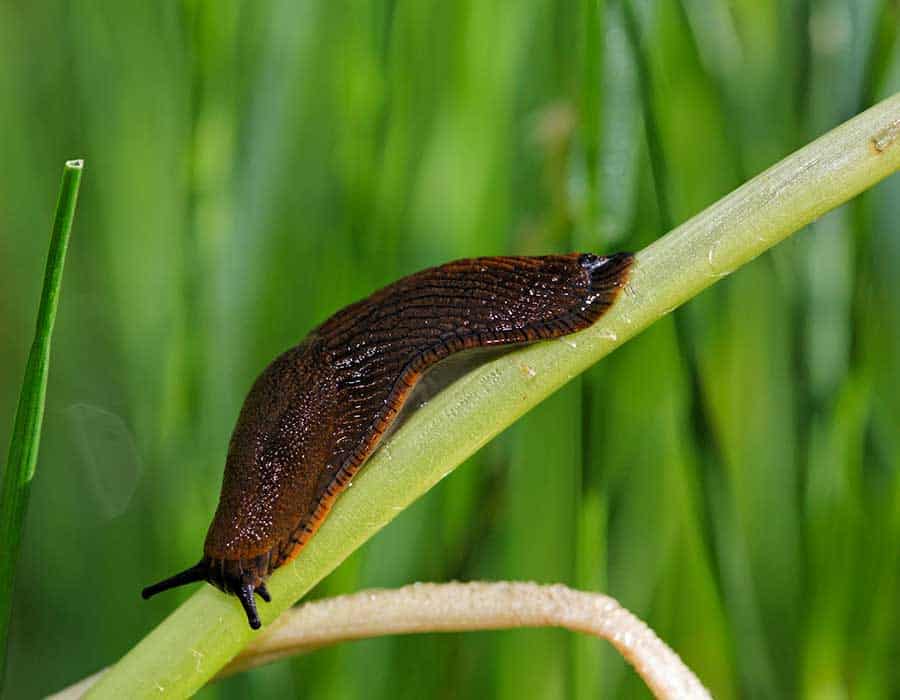
Rose Slugs
Rose slugs are actually the larvae of rose sawflies, which are black insects with yellow stripes about 12mm long. These greenish-yellow larvae are known to feed on rose leaves. When looking for rose slug infestations, check for signs of the larvae on the undersides of rose leaves, especially in late spring or early summer, as this is when the adult sawflies lay their eggs. Common symptoms of rose slug damage include leaves that have been eaten by the gregarious caterpillar-like larvae or leaves with a shiny, sticky appearance.
Japanese Beetles
Japanese beetles are another common pest that feeds on rose plants. They are about a half-inch in size and have a metallic green and copper color. Japanese beetles are known to damage both the leaves and flowers of roses, causing a skeletonized appearance where they’ve fed. To check for Japanese beetle infestations, inspect your roses during the summer months as this is when they are most active, and look for the adult beetles feeding on the plant or their larvae in the soil.
Symptoms of Pest Damage
In this section, I’ll review some common symptoms indicating that pests might be eating your roses. Paying attention to these signs can help you identify the issue early on and take necessary measures to protect your roses.
Leaf Discoloration
One common symptom of pest damage is leaf discoloration. If you notice yellowing, browning, or other discolorations on the leaves of your roses, it’s possible that insects like sawflies, aphids, or spider mites are feeding on them. These pests can strip the leaves of their essential nutrients, leading to their unhealthy appearance.
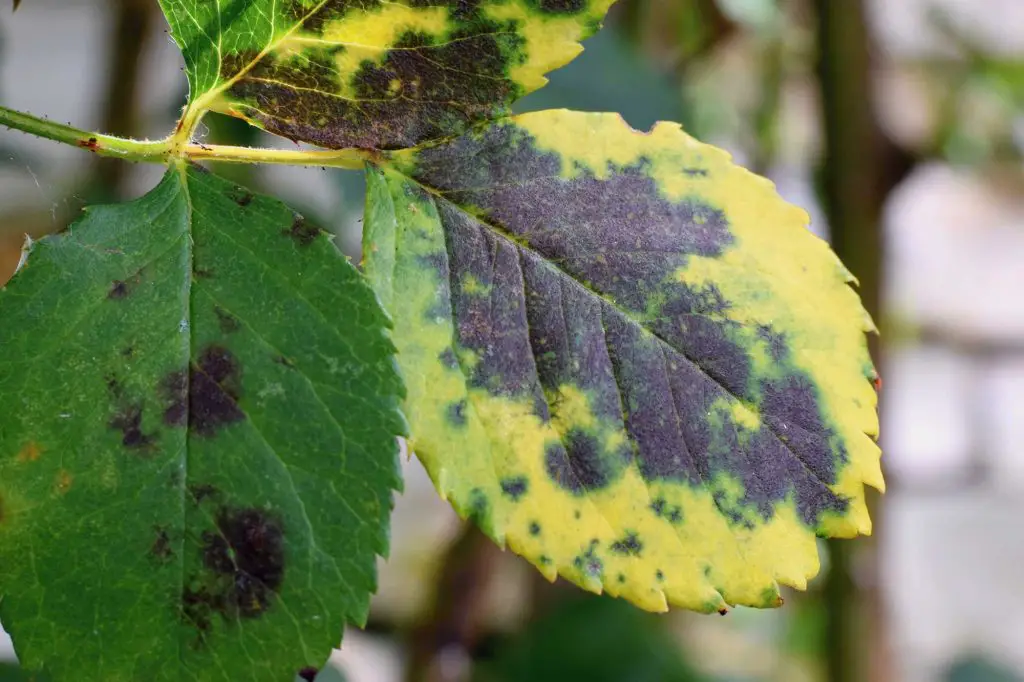
Chewed Petals
Another telltale sign of pests in your rose garden is chewed or damaged petals. Pests such as Japanese beetles and rose chafer beetles are known to feed on rose petals, leaving them with holes, tears, or other visible signs of damage. Keep an eye out for these symptoms, as they may indicate an active infestation in your garden.
Deformed Buds
Deformed or distorted buds can also be a symptom of pest damage. Pests like thrips or aphids may feed on the developing buds, leading to stunted growth, misshapen buds, or even buds that fail to open. Inspect your rose bushes carefully for these signs, as early detection can help you prevent further damage to your plants.
By staying vigilant and keeping an eye out for these common symptoms, you can identify pest-related issues in your rose garden before they become too severe. Implementing appropriate preventative measures or treatments when necessary will help maintain the health and beauty of your roses.
Prevention Methods
In this section, I will discuss several methods to prevent pests from eating my roses. These methods include encouraging beneficial insects, proper pruning, and using organic pest repellents.
Encouraging Beneficial Insects
Beneficial insects can help protect my roses by preying on harmful pests. To encourage these helpful creatures in my garden, I can plant a variety of flowering plants that attract them. Some examples of such plants are marigolds, yarrow, and fennel.
Another approach is to provide suitable habitats for beneficial insects, such as small piles of rocks or logs where they can find shelter. By maintaining a diverse and healthy garden ecosystem, I can create a natural defense against pests that want to eat my roses.
Proper Pruning
Pruning my rose bushes correctly can help prevent pest infestations. Removing dead, diseased, or damaged canes reduces the potential hiding places for pests. Additionally, pruning to create an open and well-ventilated structure allows air and sunlight to penetrate the plant, making it less appealing to pests.
Skirt pruning, or removing the lower branches of the rose bush, can also make it more difficult for pests, like rose chafers, to climb onto the leaves. This technique helps minimize damage caused by ground-dwelling pests.
Organic Pest Repellents
Using organic pest repellents is an eco-friendly method to protect my roses from harmful pests. One such repellent is neem oil, which can be sprayed on the rose bush upon the first sign of pest damage. Neem oil acts as a natural deterrent to pests such as beetles and aphids.
Another option is to use insecticidal soaps or oils, like vegetable or cottonseed oil, to control soft-bodied pests like mites and aphids. These substances work by suffocating the pests and can help prevent damage to my roses without harming beneficial insects.
Chemical Treatment Options
When it comes to dealing with the pests, there are chemical treatment options that can help protect your roses. I’ll discuss two main categories of chemical treatments: insecticides and fungicides.
Insecticides
Insecticides are an effective way to deal with insects that may be eating your rose leaves. Some common insecticides that I recommend for treating rose pests are:
- Ready-to-use insecticidal soap: It is an effective option for treating infestations of rose pests, such as aphids and spider mites. Simply spray the infested rose leaves, making sure to cover both the top and bottom surfaces.
- Neem oil: Neem oil is a natural insecticide that can help control small infestations of pests on your rose plants. Mix it with water and spray it on the affected leaves.
- Systemic insecticides: These insecticides are absorbed by the plant and can provide longer-lasting protection against pests. Some popular systemic insecticides include imidacloprid and acetamiprid. Follow the label instructions for application rates and safety measures.
It is important to note that some insecticides can be harmful to beneficial insects, such as bees. Always read the label instructions and use the product responsibly to minimize the risk to non-target organisms.
Fungicides
Fungicides are another type of chemical treatment that can help protect your roses from diseases caused by fungi. Some common fungicides that I recommend for treating rose diseases are:
- Copper fungicides: These are effective in treating various fungal diseases, such as downy mildew and rust. Apply according to the label instructions for best results.
- Sulfur-based fungicides: Sulfur is a natural fungicide that can help control powdery mildew on roses. Mix the sulfur with water and spray it on the affected leaves; be sure to follow the label instructions.
- Systemic fungicides: These fungicides are absorbed by the plant and offer longer-lasting protection from fungal diseases. Popular systemic fungicides for roses include tebuconazole and myclobutanil. Follow the label instructions for application rates and safety measures.
When using any chemical treatment, always read and follow the label instructions to ensure proper application rates and safety precautions. Remember not to apply chemicals when temperatures are extreme or when plants are stressed, as this can cause damage to your roses.
Conclusion
In my experience, various pests can harm roses, such as spider mites, aphids, Japanese beetles, rose slugs, budworms, and rose chafers. These pests can damage flowers, leave holes in leaves, and lay eggs, causing further problems.
I have found that inspecting the undersides of leaves and looking for larvae is a helpful starting point for identifying the issue. Depending on the culprit, different remediation strategies may be appropriate. Here are a few ways I’ve personally addressed pest problems:
- Manually removing pests and larvae
- Using a hose to wash off insects from rose bushes
- Pruning lower parts of rose bushes to prevent emerging adults from climbing up
- Applying sticky traps on the trunk of the bush to catch pests
Maintaining a healthy garden and regularly inspecting rose bushes for damage will significantly help reduce the impact of these pests on your roses. It’s essential to stay proactive and vigilant to ensure your roses remain vibrant and healthy.

